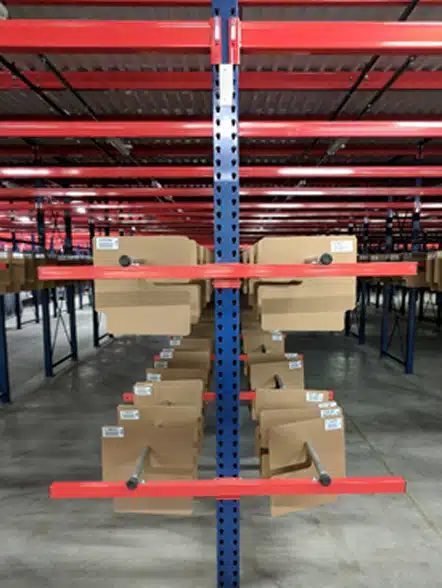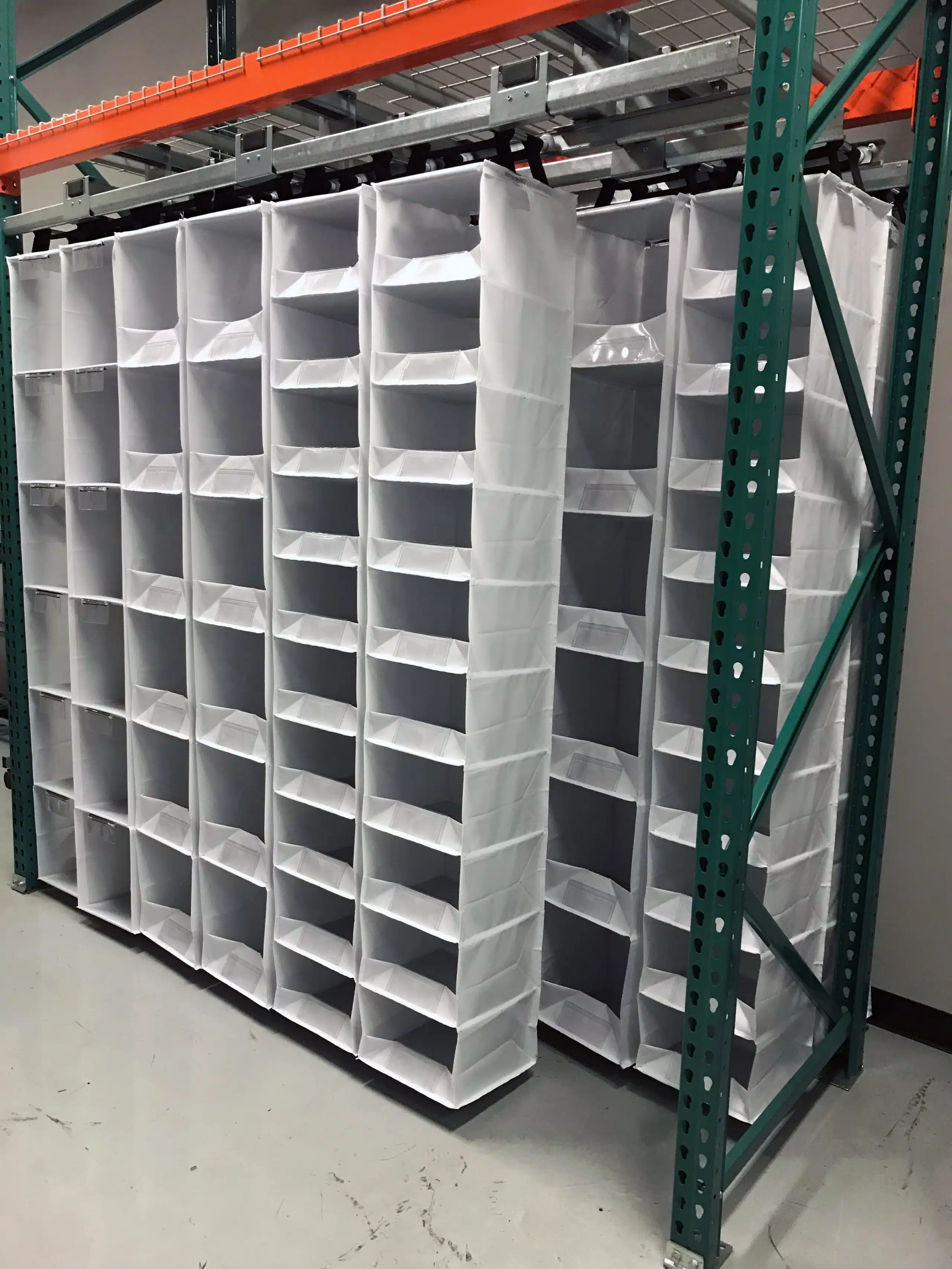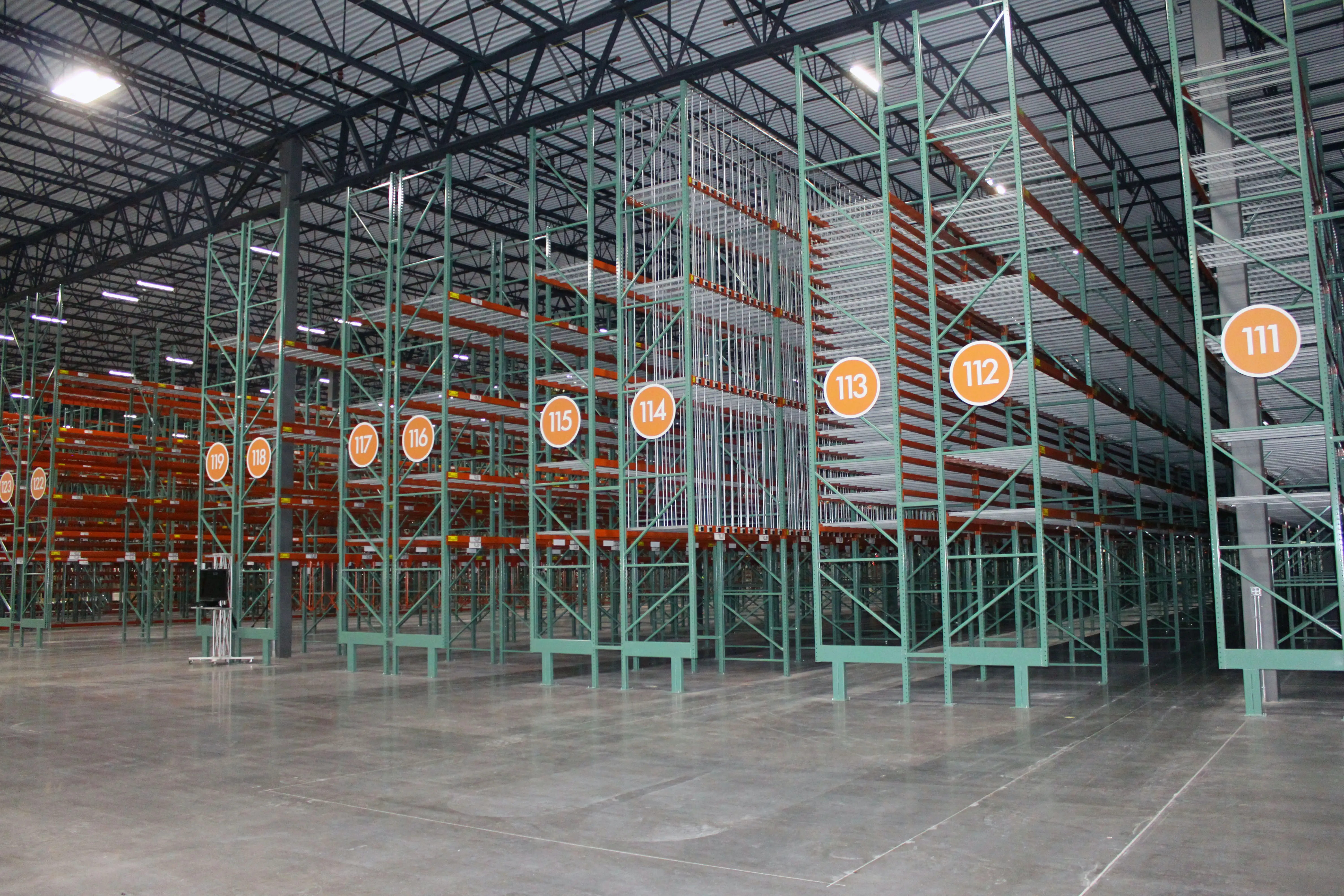Nonstandard Pallet Rack Configurations for Unique Products
Distribution centers store a variety of SKUs that vary in size, shape, and weight. While a standard pallet rack configuration isn’t always the best solution to store these products, it is commonly settled upon.
Why a Standard Pallet Rack Configuration Isn’t Always the Best Solution
Bays within a rack system generally have the beams at the same height throughout, also referred to as a ‘standard bay configuration’. People don’t often think of moving the beams to accommodate products within their system. Because the products fit, the inefficiency is overlooked. However, this often causes waisted airspace and makes picking products harder for employees.
Nonstandard Pallet Rack Configurations to Maximize Space
Non-standard rack configurations provide maximum storage for those products that don’t fit the standard pallet measurements. Non-standard pallet rack configurations involve evaluating each SKU and designing each bay of rack to accommodate it, as opposed to the other way around. This process can take more time during the design stage but is well worth it as it can dramatically increase storage density and selectivity.
Long and Flat Products
This configuration was designed to store items such as plastic sheets or sheet metal. Incorporating tight beam profiles will increase storage density for heavier items that need to be stored flat. The tight beam rows within each bay maintain higher density while still providing high selectivity and accessibility of each product.

Long, Thin, and Flat Products
To accommodate for storage of long, thin and light items, such as plastic sheets, tall bays can be configured with horizontal rods of electrical conduit. The rods act as barriers and allow the plastic sheets to be stored vertically. This provides increased storage density compared to storing the items flat.

Bulky and Unpalletized Products
Items that are tall, bulky or otherwise can’t fit in a normal bay most likely result in being stored on the ground level. Barriers are designed to help prevent these items from rubbing up against each other. These barriers also allow products to be vertically stored to provide for more accessibility.

Hanging Products
Cantilever systems have the capability of being outfitted for retail and apparel storage applications. By flipping the columns to face down-aisle and adding wire decking or garment hangers, cantilever systems can provide continuous aisle warehouse clothing storage without any beams or uprights in the way. This unique solution keeps merchandise neat and orderly while maintaining high selectivity and accessibility of products.

Products with Wheels and Casters
Products with wheels or casters are usually stored on the ground or horizontally to avoid them from rolling off the racking into the flue space. A solution is to use punch decking on selective rack which provides a flat surface to roll the product on. The punch deck can be turned up at the rear to prevent products from rolling off the racking.

Small Products or Bagged Products
If you are reaching storage capacity of your current system, implementing SpeedCell can provide more pick facings and greater SKU density without having to reconfigure your layout. The suspended design of SpeedCell allows you to utilize your existing selective rack or wide-span rack systems to create higher density. SpeedCell columns hang from a galvanized steel track system that provides high selectivity and access to rear columns. The standard 144″ bay of rack can be outfitted with up to three (3) columns deep and twelve (12) columns wide.

Maximizing Storage with a Pick Module
As you can see in the below photo, many different bay configurations and storage solutions can be incorporated into one storage system, called a pick module. A pick module is tailored to maximize storage space and the efficiency of handling multiple orders simultaneously. This is largely accomplished by an analysis of a distribution center’s SKU profiles and picking practices to develop a unique material handling system.

Get More Information
This article explains several ways you can maximize storage density for products that are otherwise challenging to store. Read this case study on how one company was able to use nonstandard pallet rack configurations within their new material handling system to store their high variety of SKUs.
Connect With Us
REB has been providing material handling systems to the warehousing and distribution industry since 1962. We understand that not all products fit the typical racking options. Our team of project designers specializes in evaluating SKUs and designing a storage system based on them, giving you a system that uses every available inch of available storage space.
Fill out the ‘Submit Your Inquiry’ form to get in touch with one of our industry experts who can answer any questions you may have or help you assess your current or future operation requirements.
Share this post:
Submit Your Inquiry
Since 1962
REB has completed more than 100,000 projects in 15 countries (including all 50 states) for more than 20,000 customers across 50 industries, with 70% of customers as repeat buyers.
This is made possible by our team that has more than 300 years of industry experience designing and project managing material handling systems.
Learn more about REB's award winning service.
